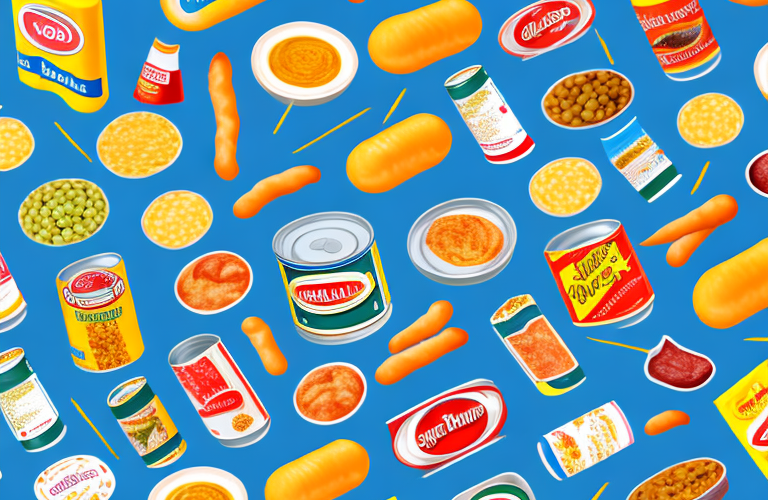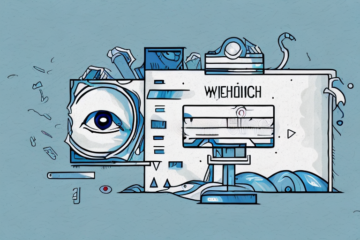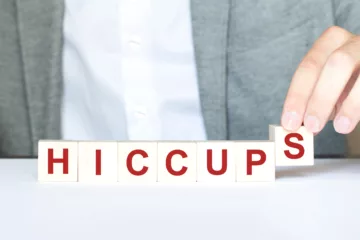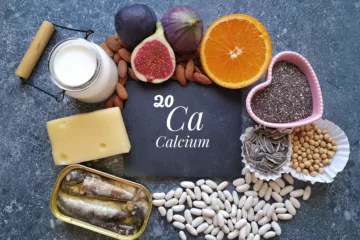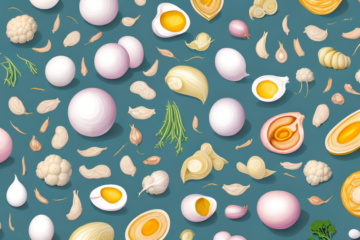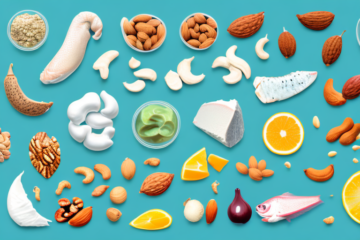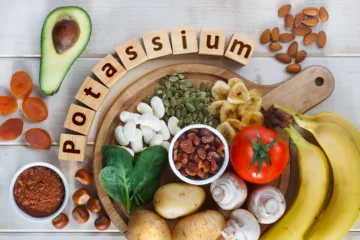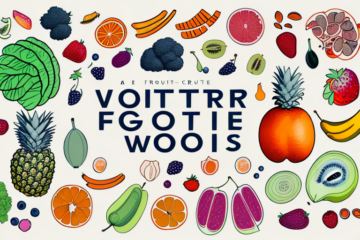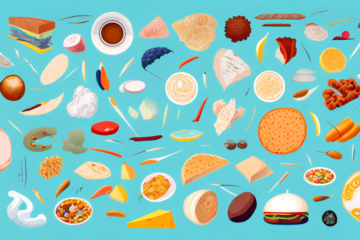Sodium is an essential mineral that is necessary for maintaining normal bodily functions. However, consuming too much sodium can have harmful effects on our health, leading to increased risk of high blood pressure, heart disease, stroke, and other health problems. In this article, we will discuss the dangers of consuming too much sodium, the recommended daily intake for adults, why sodium is needed by the body, hidden sources of sodium in our diets, processed foods and their high sodium content, how to identify high-sodium foods on food labels, low-sodium alternatives to common high-sodium foods, healthy ways to flavor your food without adding salt, and the link between high sodium intake and high blood pressure.
The Dangers Of Too Much Sodium In Your Diet
When we consume too much sodium, our body retains water to dilute the salt concentration of our blood. This increased fluid retention puts a strain on our blood vessels and leads to increased blood pressure. Over time, this can damage our blood vessels and lead to heart disease, stroke, and other health problems. Consuming too much sodium can also negatively impact kidney function, bone density, and increase the risk of developing certain types of cancer.
It is important to note that sodium is not just found in table salt, but also in many processed and packaged foods. These foods often contain high amounts of sodium to enhance flavor and increase shelf life. It is important to read food labels and choose low-sodium options whenever possible.
Reducing sodium intake can have significant health benefits. The American Heart Association recommends consuming no more than 2,300 milligrams of sodium per day, with an ideal limit of no more than 1,500 milligrams per day for most adults. This can be achieved by cooking with fresh ingredients, using herbs and spices instead of salt for flavor, and limiting processed and packaged foods.
The Recommended Daily Sodium Intake For Adults
The recommended daily sodium intake for adults is 2,300 milligrams (mg) or less. For individuals with high blood pressure, diabetes, or chronic kidney disease, the recommended daily intake is even lower – 1,500 mg or less. It’s important to note that most Americans consume far more than the recommended daily intake of sodium, with processed foods being a major source of excess sodium in the American diet.
Excess sodium intake can lead to high blood pressure, which is a major risk factor for heart disease and stroke. In addition to processed foods, other sources of high sodium include restaurant meals, canned foods, and condiments such as soy sauce and ketchup. To reduce sodium intake, it’s important to read food labels and choose low-sodium options whenever possible. Cooking at home with fresh ingredients and using herbs and spices instead of salt can also help to lower sodium intake.
Why Sodium Is Needed By The Body
Sodium is an important mineral that is necessary for maintaining normal bodily functions. It helps regulate fluid balance in the body, aids in muscle and nerve function, and plays a role in the absorption and transportation of nutrients.
However, it is important to note that consuming too much sodium can have negative effects on the body. High sodium intake has been linked to an increased risk of high blood pressure, heart disease, and stroke. It is recommended that adults consume no more than 2,300 milligrams of sodium per day, and those with certain health conditions may need to consume even less.
Hidden Sources Of Sodium In Your Diet
Many common foods can be high in sodium, including bread, cheese, deli meats, canned soup, and salad dressings. Some surprising sources of sodium include condiments such as ketchup and soy sauce, and breakfast cereals. It’s important to carefully read food labels and be mindful of the sodium content in the foods we consume.
Another source of hidden sodium in our diets is processed and packaged foods. These foods often contain high amounts of sodium as a preservative and flavor enhancer. Examples include frozen dinners, snack foods, and canned vegetables. It’s important to choose fresh, whole foods whenever possible to reduce sodium intake.
In addition to reading food labels, there are other ways to reduce sodium in your diet. Cooking at home with fresh ingredients allows you to control the amount of sodium in your meals. Using herbs and spices instead of salt can also add flavor without adding sodium. Finally, drinking plenty of water can help flush excess sodium from your body.
Processed Foods And Their High Sodium Content
Processed foods are often high in sodium due to added salt and preservatives. Many processed foods contain more than half of the recommended daily intake of sodium in just one serving. This is why it’s important to limit our consumption of processed foods and opt for fresh or minimally processed foods whenever possible.
In addition to their high sodium content, processed foods are also often high in added sugars and unhealthy fats. These ingredients can contribute to a variety of health problems, including obesity, diabetes, and heart disease. It’s important to read food labels carefully and choose products with lower amounts of sodium, sugar, and unhealthy fats. Cooking meals at home using fresh ingredients is also a great way to ensure that you’re consuming a healthy, balanced diet.
How To Identify High-Sodium Foods On Food Labels
When reading food labels, it’s important to pay attention to the sodium content per serving and the serving size. Foods that are labeled as “low sodium” must contain 140 mg of sodium or less per serving. “Reduced sodium” foods have at least 25% less sodium than the original product, but may still be high in sodium overall. “No added salt” or “unsalted” products should also be considered when trying to reduce sodium intake.
It’s also important to be aware of the different names that sodium can be listed as on food labels. Sodium can be disguised as monosodium glutamate (MSG), baking soda, baking powder, disodium phosphate, sodium alginate, sodium nitrate, and sodium citrate, among others. Checking for these ingredients can help identify high-sodium foods that may not be labeled as such.
Low-Sodium Alternatives To Common High-Sodium Foods
There are many low-sodium alternatives to common high-sodium foods. For example, swapping out canned vegetables for fresh or frozen options can drastically reduce sodium intake. Using herbs and spices to flavor food instead of salt can also add delicious flavor without adding extra sodium.
Another great way to reduce sodium intake is to choose low-sodium versions of condiments such as ketchup, soy sauce, and salad dressings. These products can often be found in the health food section of grocery stores or online. Additionally, cooking at home with fresh ingredients allows for better control over the amount of sodium in meals.
It’s important to note that reducing sodium intake can have numerous health benefits, including lowering blood pressure and reducing the risk of heart disease. However, it’s also important to consult with a healthcare professional before making any significant changes to your diet.
Healthy Ways To Flavor Your Food Without Adding Salt
There are many healthy ways to flavor your food without adding salt. Some options include using fresh herbs and spices, such as basil, garlic, and turmeric, or using acid, such as lemon juice or vinegar, to enhance flavor. Roasting or grilling fruits and vegetables can also bring out their natural sweetness and add delicious flavor without the need for added salt.
Another great way to add flavor to your food without salt is by using healthy fats, such as olive oil or avocado oil. These oils not only add flavor but also provide health benefits. Additionally, using low-sodium broth or stock instead of water when cooking grains or soups can add depth of flavor without the need for added salt. Experimenting with different flavor combinations and trying new recipes can also help you discover new ways to add flavor to your meals without relying on salt.
The Link Between High Sodium Intake And High Blood Pressure
High sodium intake is a major contributor to high blood pressure, which is a leading risk factor for heart disease and stroke. Reducing sodium intake can help lower blood pressure and reduce the risk of developing these health problems.
It is recommended that adults consume no more than 2,300 milligrams of sodium per day, which is about one teaspoon of salt. However, the average American consumes over 3,400 milligrams of sodium per day. This excess sodium intake can lead to fluid retention, which increases blood volume and puts extra strain on the heart and blood vessels. In addition to reducing sodium intake, increasing physical activity and consuming a diet rich in fruits, vegetables, and whole grains can also help lower blood pressure and reduce the risk of heart disease and stroke.
How To Reduce Your Sodium Intake And Improve Your Health
To reduce sodium intake, it’s important to limit our consumption of processed and high-sodium foods. Opting for fresh or minimally processed options, cooking at home, and reading food labels carefully can all help reduce sodium intake. Incorporating low-sodium alternatives and healthy flavorings can also add variety and deliciousness to your meals while reducing sodium intake.
Another way to reduce sodium intake is to be mindful of condiments and sauces. Many of these products are high in sodium, so choosing low-sodium options or making your own can significantly reduce your overall intake. Additionally, using herbs and spices to flavor your food instead of salt can also help reduce sodium intake while adding delicious flavor.
It’s important to note that reducing sodium intake can have numerous health benefits. High sodium intake has been linked to high blood pressure, heart disease, and stroke. By reducing sodium intake, individuals can improve their overall health and reduce their risk of these health issues.
Best Practices For Eating Out While Maintaining A Low-Sodium Diet
Eating out can be challenging when trying to maintain a low-sodium diet, but there are tips and tricks to help make it easier. Researching restaurant menus ahead of time, asking for sauces and dressings on the side, and requesting that meals be prepared without added salt can all help reduce sodium intake while dining out.
Another helpful tip is to choose restaurants that offer healthier options, such as salads, grilled meats, and steamed vegetables. These dishes are often lower in sodium and can be customized to fit your dietary needs. Additionally, it’s important to be mindful of portion sizes, as many restaurant meals are oversized and can contain high amounts of sodium.
Finally, don’t be afraid to speak up and ask questions about the preparation of your food. Many restaurants are willing to accommodate dietary restrictions and can provide alternative seasoning options or substitutions. By being proactive and informed, you can enjoy eating out while still maintaining a low-sodium diet.
Common Misconceptions About Sodium And A Healthy Diet
There are many common misconceptions about sodium and a healthy diet. For example, many people believe that sea salt is a healthier alternative to table salt. However, sea salt and table salt are chemically and nutritionally the same and contain the same amount of sodium per serving. Another misconception is that athletes need extra sodium to perform well and stay hydrated. While athletes do need more sodium than the average person, they can still meet their sodium needs through a balanced diet and hydration with water and electrolyte-rich beverages.
One additional misconception about sodium and a healthy diet is that reducing sodium intake is only important for individuals with high blood pressure. In reality, consuming too much sodium can increase the risk of developing high blood pressure, heart disease, and stroke, regardless of an individual’s current blood pressure levels. It is recommended that adults consume no more than 2,300 milligrams of sodium per day, and individuals with high blood pressure or other health conditions may need to consume even less.
Recipes For Low-Sodium Meals That Are Delicious And Nutritious
There are many delicious and nutritious low-sodium recipes to choose from. Some options include grilled salmon with roasted vegetables, quinoa and black bean burgers, and vegetable stir-fry. Experimenting with new recipes and incorporating fresh, whole foods can help make low-sodium eating enjoyable and satisfying.
Another great low-sodium recipe option is a hearty vegetable soup. This can be made with a variety of vegetables such as carrots, celery, onions, and tomatoes. Adding in some low-sodium broth and herbs and spices can create a flavorful and filling meal.
It’s important to note that reducing sodium intake can have numerous health benefits, such as lowering blood pressure and reducing the risk of heart disease. However, it’s also important to consult with a healthcare professional before making any significant changes to your diet.
The Role Of Potassium In Counteracting The Effects Of Sodium On Heart Health
Consuming more potassium-rich foods can help counteract the effects of excessive sodium intake on heart health. Potassium helps regulate fluid balance in the body and can help lower blood pressure. Potassium-rich foods include sweet potatoes, bananas, avocados, and spinach.
In addition to its role in counteracting the effects of sodium on heart health, potassium also plays a crucial role in muscle function and nerve transmission. Low levels of potassium can lead to muscle weakness, cramping, and irregular heartbeat. It is important to maintain a balance of both sodium and potassium in the diet to support overall health and prevent chronic diseases.
How To Build A Balanced Meal Plan With Reduced Sodium Intake
Building a balanced meal plan with reduced sodium intake is possible with careful planning and preparation. Incorporating a variety of fruits, vegetables, whole grains, and lean proteins can help ensure a balanced and nutritious diet. Using herbs and spices to flavor meals can also add delicious flavor without adding extra sodium. Reducing sodium intake is an important step in maintaining optimal health and reducing the risk of developing chronic health problems.
In addition to incorporating a variety of healthy foods and reducing sodium intake, it is also important to pay attention to portion sizes. Eating too much of any food, even healthy options, can lead to weight gain and other health issues. Using smaller plates and measuring out portions can help control portion sizes and ensure that you are getting the right amount of nutrients without overeating. It is also important to stay hydrated by drinking plenty of water throughout the day.

